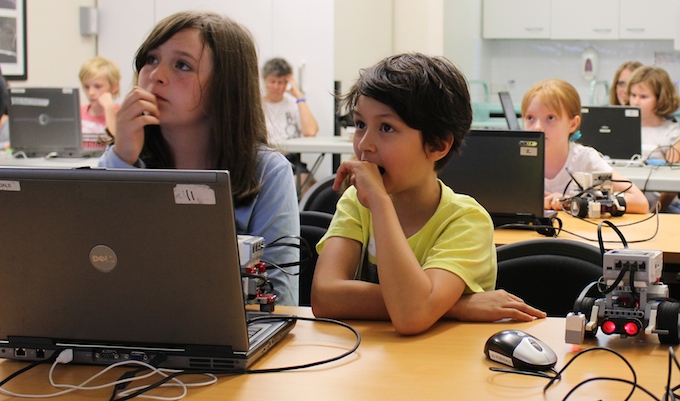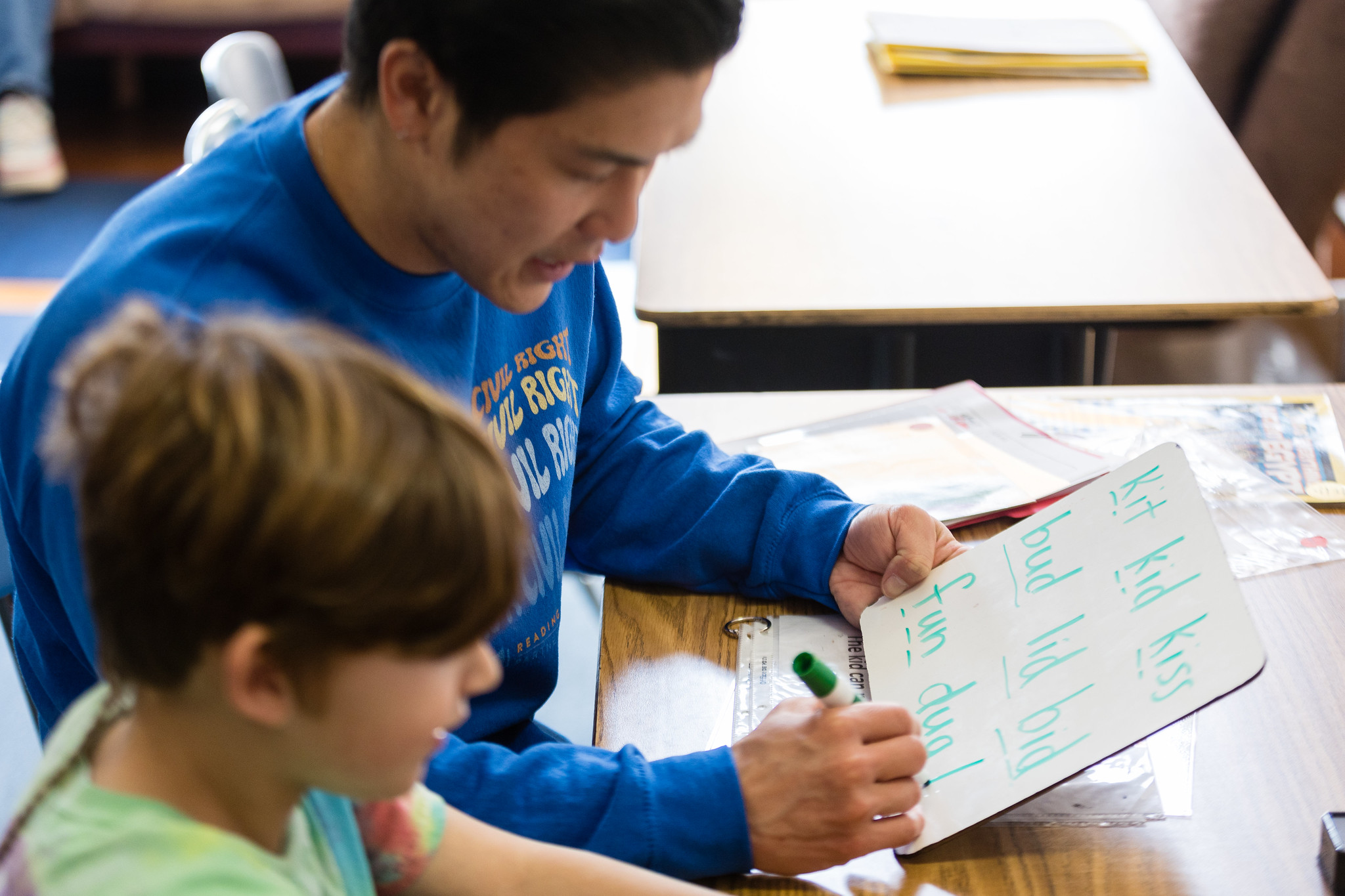April 5, 2016
Why STEM and reading go hand in hand

Photo Credit: Sunshine Coast Libraries via Compfight cc
When I was growing up, I remember learning that the three most important pillars of my education were reading, writing, and arithmetic. Over the past few decades, our world has changed rapidly and these three pillars, while still important, now share the spotlight with other important disciplines. In recent years, technology has become essential to our daily lives and our contribution to the global economy. This is reflected in the recent focus on STEM (Science, Technology, Engineering, and Mathematics) in our country’s schools.
While it is crucial for children to develop their skills within the STEM disciplines, they must hone their literacy skills first. Literacy skills are vital to understanding STEM concepts and will lead to success across all disciplines.
Competency in STEM will help students contribute to our world of technological advances. While STEM and literacy skills are often viewed as two separate educational priorities, the disciplines actually go hand in hand. In order to become an accomplished scientist or engineer, one must first develop strong literacy skills. The STEM disciplines require the interpretation of technical texts, a vast knowledge of content specific vocabulary, critical thinking, and the ability to clearly communicate these complex concepts to others verbally and in writing. All of these skills are developed through literacy based instruction. By integrating literacy and STEM, children can become strong readers while exploring topics that may pique their interest in STEM.
You might wonder how these separate content areas, while very different, can be integrated. By tying literacy and STEM together, you can develop your child’s literacy skills and expose them to the wonderful world of science, technology, engineering, and mathematics. We will explore several ways you can develop your child’s literacy skills while exposing them to STEM content.
50/50 split
According to a recommendation laid out by the Common Core State Standards (CCSS), students in fourth grade should read 50% informational texts and 50% literature texts. This proportion changes as students advance in school. The recommendation for high school seniors is to read 30% literature texts and 70% informational texts (Pathways to the Common Core, Calkins, Ehrenworth & Lehman, 2012).
In order for students to be prepared to read an increasing number of informational texts, they need to develop their informational reading skills at an early age.
- Keep your home library stocked with informational texts.
- Choose books that match your child’s interests. If your child loves dinosaurs, insects, or the solar system, select some non-fiction titles that explore these subjects.
- You can also spend time browsing the non-fiction aisles at your local library. When you check books out of the library, try to select an equal number of literature and informational texts.
- A few terrific nonfiction authors include Gail Gibbons, who writes beautifully illustrated texts for younger readers, Seymour Simon, who includes scientific photographs in his texts for upper elementary students, and Greg Tang, who writes entertaining tales that are focused on mathematics. Books about science, technology, engineering and math can be engaging and are a great way to expose children to STEM and ignite their interests in these topics.
Cultivate curiosity
When your child asks a question that reveals his or her desire to learn more about a topic, take advantage of this opportunity as a way to incorporate STEM and literacy. Questions like, “How does a car work?” and “Why does a light bulb turn on when you flip the switch?” can be answered with a trip to the local library.
Help your child find books in the library that will contain answers to his or her questions. Then, spend time reading these books with your child. When you read informational texts together, you can model important non-fiction reading strategies.
- While reading, point out important vocabulary words that are content specific, like ‘gear’, ‘motor’, or ‘circuit’. This can also be a great opportunity to use the glossary or a dictionary.
- Another important nonfiction reading strategy is the ability to learn from the text features on the page. While you are reading with your child, point out diagrams, charts, tables, graphs, and timelines and explain how to read them.
After you’ve learned about a new topic, you can help inspire your child by reading a biography about a famous innovator who contributed to that field. For example, a child interested in how cars work can read a picture book biography of Soichiro Honda or a young scientist interested in the light bulb can read about Thomas Edison.
Go digital
Literacy spans beyond the reading of traditional, hardcopy books. Just as an emphasis on STEM has increased in recent years, so has the rise of digital literacy. Digital literacy includes all of the skills required to understand and operate digital devices, such as computers, tablets, e-readers, and Smartphones. This skill set is expanding rapidly, as new innovations make their way into our daily lives.
It’s important to help develop your child’s digital literacy skills in a safe and educational way. There are many kid friendly resources, such as the Google Junior search engine and educational websites like National Geographic for Kids. You can also build in opportunities to use technology to learn together, like watching an instructional cooking video on a tablet while learning to making a meal. You can also teach your child to use tools like a digital timer or stopwatch to turn household chores into a fun race. Teaching digital literacy skills can help broaden your child’s understanding of technology beyond the world of video games while also perhaps piquing his or her interests in STEM topics.











